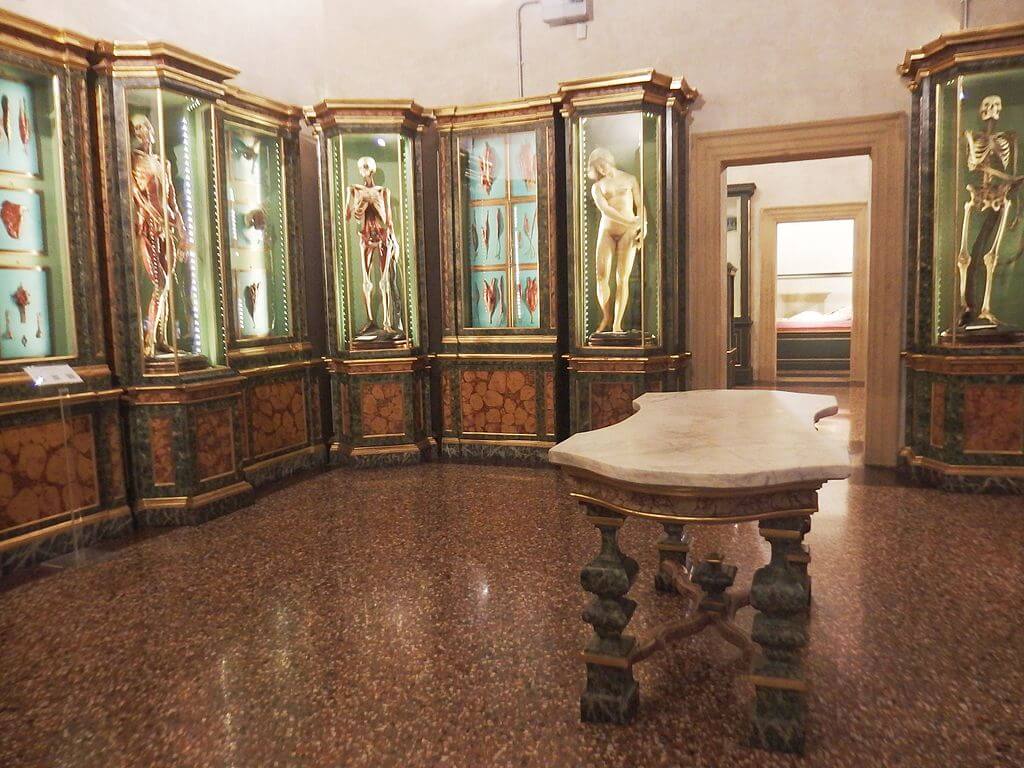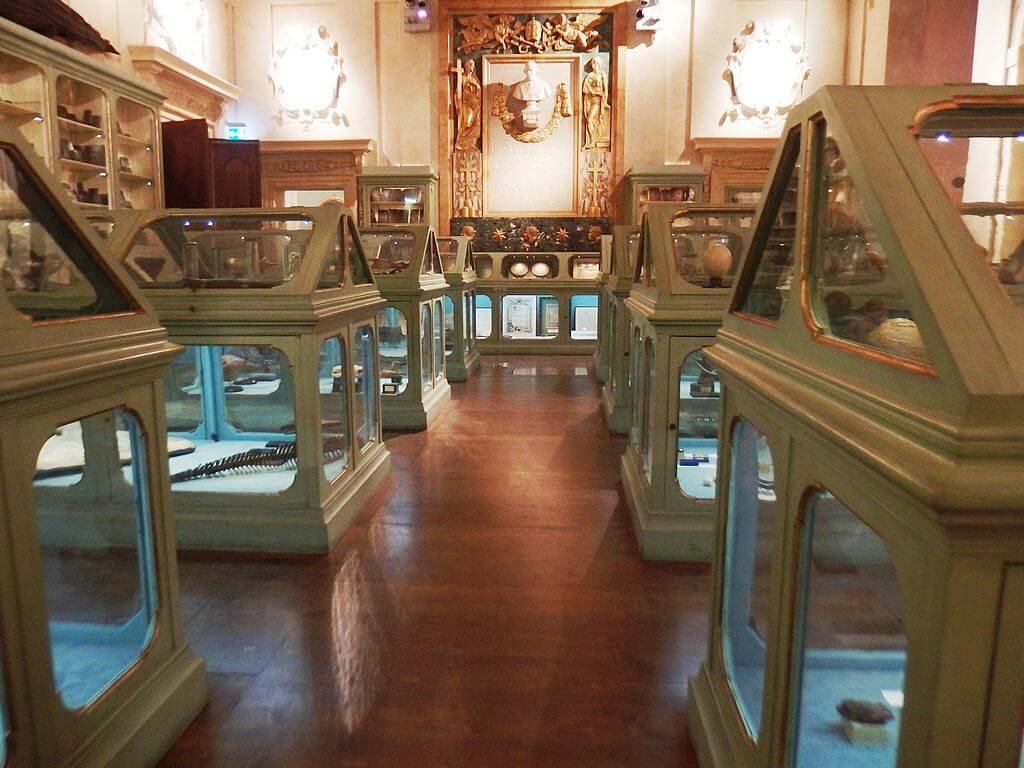Museo di palazzo Poggi
 Musei
Musei
-
 0512099610
0512099610
-
 sito web
sito web
-
Lun Chiuso Mar 10.00 - 16.00 Mer 10.00 - 16.00 Gio 10.00 - 16.00 Ven 10.00 - 16.00 Sab 10.30 - 17.30 Dom 10.30 - 17.30
Descrizione
Il museo di Palazzo Poggi, il cui stabile accoglie anche il Museo della Specola, si trova a Bologna in via Zamboni, nello stesso edificio che ospita l'Alma Mater Studiorum.
Il Museo è costituito dalla ricomposizione dei laboratori e delle collezioni dell'antico Istituto delle Scienze, attivo nello stesso palazzo tra il 1711 e il 1799.
Negli anni l'istituto, oltre alla ricca strumentazione della quale disponeva, cominciò a raccogliere anche collezioni pittoriche, come la wunderkammer di Ferdinando Cospi e la collezione di Ulisse Aldrovandi, oltre alle pitture murali di Niccolò dell'Abate, di Pellegrino Tibaldi, Prospero Fontana, del Nosadella e di Ercole Procaccini il Vecchio.
A partire dall'autunno del 2000, l'Università ha riaperto al pubblico il Palazzo, ricollocando nelle sue stanze i reperti e la strumentazione scientifica raccolti e utilizzati nel XVIII secolo.
Il documento originale della Magna Charta Universitatum è esposto nella "Sala della Magna Charta" del museo.
Fonte: Wikipedia
Carducci Room
The poet Giosuè Carducci was appointed the chair of Italian literature at the Studio of Bologna in 1860. He used to hold his lessons in this room which was later to take his name and has recently been restored. The statue of Hercules by Angelo Piò, formerly in the courtyard bearing its name and replaced by a cast taken from the original, is now in the room immediately beside it.
Naval and Antiques Maps & Charts Museum
The Museum contains the entire "Geography and Nautical Room" of the Institute of Sciences, composed of precious models of ships dating from the 17th and 18th centuries and geographical maps from the same period. It may seem odd to find a display of ships in a city like Bologna, situated at some distance from the sea in the Po valley. The Institute however created this really fine collection of fleets of warships to study the advanced technology that was essential for European nations if they wanted to maintain their military and political fortunes, commercial security and, therefore, the power of the State. The walls inside the Museum are hung with huge copper-engraved maps enriched around the edges with writing, ornamental motifs, and decorations depicting human, animal and allegorical figures. In spite of science's attempt to reduce the immensity of the world to an accessible form, it did not as yet appear to be detached from beauty and imagination.
Museum of Human Anatomy
The Musem contains the 18th century anatomic wax models that once belonged to the Institute of Sciences and include the Ercole Lelli collection, as well as the nucleus assembled by a married couple from Bologna, Giovanni and Anna Manzolini, and various pieces by the famous Florentine wax modeller Clemente Susini. The idea of providing the Institute with anatomic models in wax first came from Cardinal Prospero Lambertini, Archbishop of Bologna, after having seen the first drawings executed by Ercole Lelli (1702-1766), a member of the Clementine Academy and an enthusiastic scholar of anatomy. Lambertini, who became Pope under the name of Benedict XIV, in fact commissioned Lelli in 1742 to carry out a series of wax models that were to offer a complete section of human osteology and myology. The Lelli collection includes eight life sized statues, composed of two nudes, one male (Adam) and the other female (Eve), two skeletons and four myological statues that, starting from the "Scorticato" (skinned figure), show the layers of the muscles at various depths, together with a series of plates illustrating myological and osteological details. Later Lelli's specimens were added to by other created by Giovanni Manzolini (1700-1755) and his wife Anna Morandi (1714-1774). The Bolognese collection was further enlarged in 1789 with the addition of various works by Florentine wax modeller Clemente Susini (1754-1814), among them the famous little Venus.
Credits: Bologna Welcome


